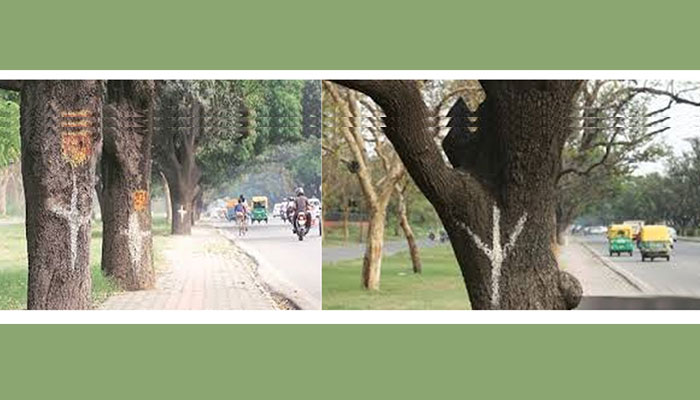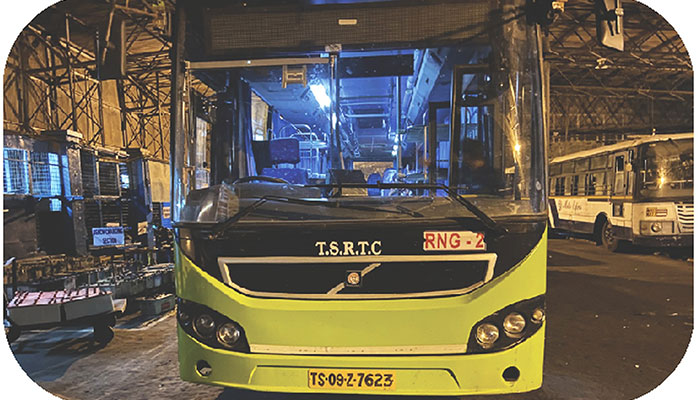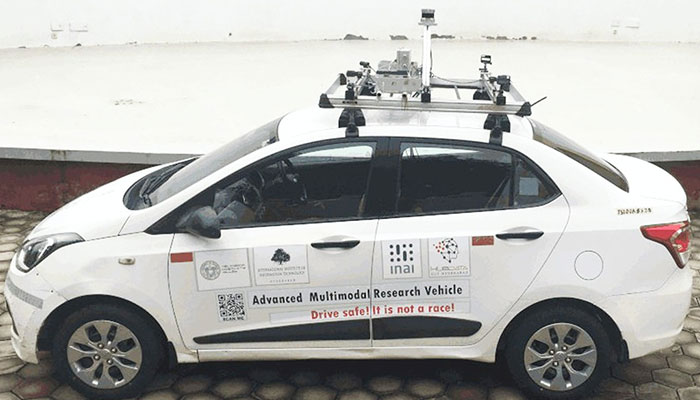Dr. Ravi Kiran Sarvadevabhatla lists out the various solutions developed by IIITH for the Indian mobility sector.
The impact of AI on our daily lives is manifold. Technological innovations are disrupting various industries too, from education and healthcare to manufacturing and transportation, to name a few. In the field of transportation, self-driving cars have particularly gripped everyone’s imagination. But the mobility ecosystem has expanded over the last few years to go beyond autonomous navigation. The i-Hub-Data centre located on IIITH campus has been actively involved in various applications that are multi-disciplinary in nature for mobility-based problems.
One of them concerns detecting abnormal traffic patterns and rule violations on Indian roads. These include traffic violations by two wheelers such as riding without a helmet, triple riding, wrong side driving, and others. The traditional approach for tackling these problems has been to use CCTV cameras that are mounted on traffic lights and at intersections. The cameras capture videos which are then analyzed to detect violations. The data of the violation is transferred to a centralised server at the Traffic Control Room where a challan is generated. This system however has certain limitations; the chief being that the violators know exactly where the cameras are since the cameras are fixed. The element of surprise is missing here. In order for deterrence to be a key strategy that leads to a better adherence to traffic rules, then it is important that there be an element of surprise.
Leveraging Bodhyaan
A decision was taken to leverage Bodhyaan – an advanced multimodal research vehicle which is equipped with multiple sensors and helps in capturing traffic data. With this data, Bodhyaan enables research from academia and the Indian startup industry to work on specific problems pertaining to Indian traffic and roads. In order to overcome the limitations of static CCTV cameras, we developed a complete pipeline that captures videos of traffic violations via Bodhyaan and tags them under various violation categories. With these video clippings available at the police control room, it is easy to draw up challans.
Data Collection At Scale
With two wheelers constituting a majority of Indian traffic and consequently a majority of traffic violations too, a similar initiative to curb wrong side driving by two-wheelers – which is a major cause of road accidents – has been undertaken. Data of traffic violations by two wheelers was captured at a fleet scale rather than via a single platform. We used video recordings captured by dashcams mounted on cabs and buses that criss-cross the city roads. The videos are processed by our system and challans generated accordingly. In this way, there is not only an element of surprise but also a distribution in the capturing of data through out the city.
Two Wheeler Platform
Just like Bodhyaan for four wheelers, there is now a two wheeler technology platform that aims to collect data encompassing every facet of two wheeler safety such as technologies that detect falls, rider alert and assistance, as well as other technologies related to accessories such as smart helmets. The intent in this case is also to measure riding behaviour and come up with riding scores. The reasoning behind this is to potentially use these scores to rank people as safe drivers. It could be used by either insurance companies or automobile dealers to incentivise safe driving practices by changing premium amounts or offering discounts respectively.

Multi-disciplinary Project
A unique drone-based infrastructure assessment project saw the joining hands of researchers from the Robotics Research Centre, the Centre for Visual Information Technology and the Earthquake Engineering Research Centre. The current method of assessing building safety involves a manual procedure where people measure various parameters of the building such as height of the building, height of each storey in the building, number of windows it has, number of heavy objects on the roof, percentage of roof area occupied by these heavy objects, and so on. We realised that some parts of the survey form could be filled out automatically. For this, we used a combination of a drone equipped with computer vision technology. The idea was to create a software package that could be used by non-technical experts too. The software takes video footage shot from the drone as input, and automatically determines the parameters that are required without any manual intervention. So what would previously take many hours of manual work can now be done in a couple of seconds with this software.

Tree Counting
Another example of a large-scale project that was undertaken in the past relates to the one commissioned by the Municipality. The local body often embarks on tree plantation drives and wanted to know how successful or how green was one such area after the drive. To arrive at the density of tree cover in a particular area, a two wheeler with a GoPro camera that was facing sideways was deployed so that it could not only capture images but also the corresponding GPS coordinates. We not only measured tree density but also developed a dashboard demonstrating tree cover for a particular geographical region. What was originally developed for inner city roads was later extended to the outer ring road area too. A similar solution was also developed to map the city’s potholes which was then made available on a dashboard.

i-RASTE
One of the bigger projects that initially kicked off in the city of Nagpur and has since been extended to the state of Telangana is the Intelligent Solutions for Road Safety Through Technology and Engineering, otherwise known as i-RASTE. It aims to leverage the predictive power of AI in preventing road accidents. The purpose of the project is twofold – one, to understand driver behaviour and the second, to map potential blackspots or accident zones in the cities. ADAS or advanced driver assistance systems equipped with dash cams were installed in a fleet of Nagpur’s buses which not only emitted alerts about probable collisions but also simultaneously recorded state of the city’s roads along with driver behaviour. The data was then supplemented with road safety awareness sessions with the bus drivers to understand better the motivations behind their actions. This kind of technological intervention coupled with a sociological discourse led to a reduction in the number of alerts recorded by ADAS as well as accidents.

Conclusion
The i-Hub Data center which was set up under the National Mission on Interdisciplinary Cyber Physical Systems is constantly looking at ways to facilitate good, scalable solutions for a myriad of mobility-based problems. And interestingly enough, the solutions here go beyond lab prototypes. The Hub comprises of an engineering division that scales it up to be deployed in real life, thereby translating a vision into reality.
This article was initially published in the October edition of TechForward Dispatch

Dr Ravi Kiran Sarvadevabhatla is an Associate Professor at IIITH. Though his work is primarily in the areas of Computer Vision and applied Machine Learning, his research interests are broad-ranging with a particular predilection towards multi-disciplinary problems involving multi-modal multimedia data and disciplines.


Next post